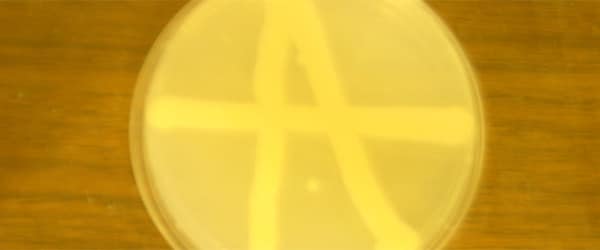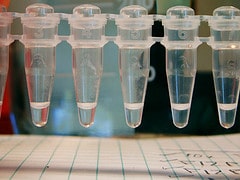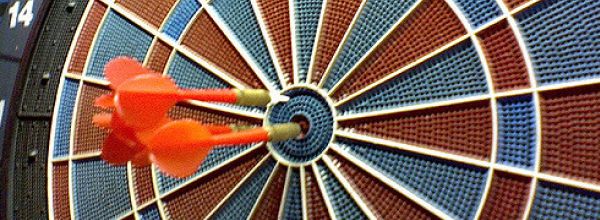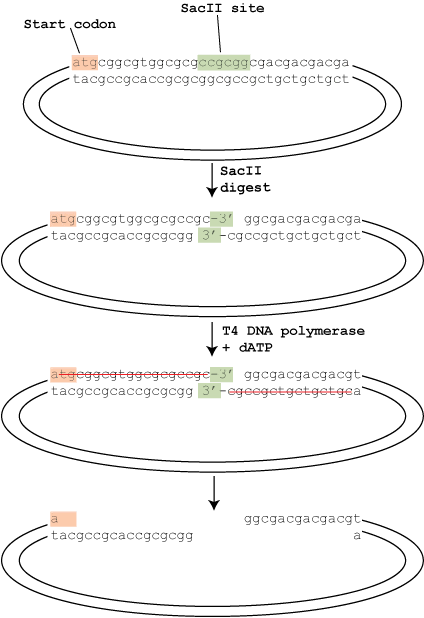Ethanol Precipitation of DNA and RNA: How it Works
Using ethanol precipitation to isolate or concentrate your nucleic acids? Find out how this routinely used technique works, and get tips to produce the best results.
Join Us
Sign up for our feature-packed newsletter today to ensure you get the latest expert help and advice to level up your lab work.

Using ethanol precipitation to isolate or concentrate your nucleic acids? Find out how this routinely used technique works, and get tips to produce the best results.

Effective laboratory sterilization methods are essential for working with isolated cell lines. Read our guide to the top 6 sterilization techniques to banish those bugs.

Agar plates are the foundation of many experiments. Make sure your plates are perfect every time with these 8 tips and start your experiment ready for success!

Don’t be confused by Ct values! We’ll guide you through what they are, how to calculate them, and troubleshooting issues.

How do you measure how good you are as a scientist? One way is the h-index. Discover what this is, and learn about the pros and cons of using it to assess your scientific career.

Do you fully understand why enzymes have the best catalytic activity within a specific temperature ranges? Find out in our handy guide.

Not sure what FRET is, or just need a refresher on how FRET works? Read our short guide to understand the usefulness of FRET for studying protein-protein interactions.

Working in a lab can be a smelly business. Let’s countdown some of the worst lab smells! Then, you can suggest your own.

Understanding the basic (and simple!) chemistry behind DNA ligation will help you get better DNA ligation results. Learn all about it here.

This article reassesses the dangers of using ethidium bromide and compares some supposedly safer alternatives

Phenol extraction is a common method for removing proteins from nucleic acids. Discover how phenol extraction of DNA works.

Making good quality electrocompetent E. coli is very easy. One morning’s work (with a bit of work ahead of time) is all it takes.

Discover what you need for successful DNA precipitation and how to choose between ethanol and isopropanol solvents.

Knowing how SDS-PAGE works means that you can troubleshoot any issues in your experiment and tweak the setup to get publication-worthy figures. Find out how it works here.

Alkaline lysis for plasmid isolation? That’s like the ABCs in a molecular biology lab. Read this detailed article to understand the process behind this common technique.

Are you struggling with your DNA clean-up? Then check out our top five methods so you can pick the best option for your experiments.

A scientific research poster can be a great tool for drawing people into a conversation at a conference. We’ve pulled together our 10 top tips to help you prep perfect posters.

So you might be wondering why you bothered with all those years of failed experiments, committees, over-bearing supervisors, thesis writing, and thesis defending. Well, no matter where life takes you, you can now call yourself “Dr” whenever you want. And that can be more useful than you might think…

Getting publication perfect confocal images can be tricky. If you are struggling or just want to ensure you’re capturing the best images possible, check out our top 7 tips for confocal imaging.

If you’re coming to the end of your undergraduate life sciences degree, you might be wondering what to do next. Fortunately, there are many life sciences career paths that you could take. We explore some of the options here.

Discover how structured illumination microscopy works can help you see things in greater detail.

Resistance to the antibiotic ampicillin is commonly used as a selection marker for plasmids in gene cloning and protein expression in E.coli and other bacteria. While it can be incredibly useful tool, there can be problems using this selection marker that you need to be aware of if if you plan on using it. This…

Antibiotics are used in a wide range of techniques in molecular biology including molecular cloning and are important for treating pesky mycoplasma contamination in cell cultures. They can also be used to maximize your plasmid yields by reducing protein synthesis, in certain circumstances. The aim of this post is to provide an easy reference to…

Over the past few decades molecular biologists have developed procedures to simplify and standardize cloning processes, allowing vast arrays of artificial DNA structures to be more easily assembled. Are you familiar with all the cloning options out there? Let’s look at five different cloning methods you can use to get your construct. At the end…

Continuing from our first article on lasers for confocal microscopy, we will now discuss two specialized types of lasers: lasers for two-photon excitation and tunable, white light lasers. We will also discuss the applications of the two lasers. Lasers for Two-Photon Excitation The two-photon absorption phenomenon was first described for microscopy in 1931. Here, the…

One of the major roadblocks to the development of novel therapies is the lack of robust and reliable animal models. Selecting and validating animal models that mimic human conditions is challenging, especially when faced with chronic multi-factorial diseases such as diabetes and obesity. Acknowledging this problem, the National Institutes of Health initiated the Animal Models…

Have you ever entertained the idea of learning to program? Have you tried but felt discouraged by the overwhelming amount of information out there? If you answered yes to both of those questions, I encourage you to try again with the following resources. Computer science is one of the best subjects to self learn. …

Lasers were once called “a solution looking for a problem.” The word—which is an acronym for Light Amplification by Stimulated Emission of Radiation—used to conjure up images of deadly weapons from Sci-Fi movies and TV series. However, their increasing use in everyday life, first in CD players and then in barcode scanners and pointers, have…

Fortunately for microscopy users, measuring intracellular fluorescence has been made relatively simple through an ImageJ plugin called the Cell Magic Wand. For those of you unfamiliar with ImageJ, it’s a popular image processing program that runs on Mac, Windows, and Linux. How to use ImageJ for measuring intracellular fluorescence First of all, to begin measuring…

Without good planning and preparation, writing your thesis can be a nightmare. Here are some tips on how to make the process a whole lot easier.

Routine PCR? Let’s be honest, there’s no such thing. Even with the simplest PCR reaction things can go wrong, so you need to have a good checklist of ideas for PCR troubleshooting and rectifying the problem. Today I have brainstormed all of the ways I can think of to approach problems with standard PCR reactions….

This is the first in a three-part series on the transformation of E.coli. By the end of this, you should be an expert on E.coli transformation and on which strains to choose for different applications. If you’re already an expert, I hope it’ll be an enjoyable refresher for you. In either case, please comment below…
Greetings, I’m a research student and I’m having a lot of trouble in finding the right antibodies for my study, because I need both monoclonal and polyclonal. And I need to start addressing some other international scientists. The problem is that I don’t know how to address the situation. If they indeed have antibodies that…
When we are doing a double labelling, it makes good sense to choose two fluorophores with spectra widely spaced apart to avoid mixing. Why combine GFP with Rhodamine, when you can combine it with Texas Red?

One of the most crucial steps in any cloning procedure is the preparation of the vector. Get it wrong and your chances of success will be drastically reduced. The overall aim for a good vector preparation is to obtain a fairly concentrated stock of undamaged, fully digested plasmid DNA that is free from contaminants. Missing…

Quantitative PCR (qPCR) uses fluorescent dyes or probes to visualize the amplification of specific DNA sequences as it happens (i.e. in real time). The dyes or probes fluoresce when they bind to newly amplified DNA, and the amount of fluorescence emitted is proportional to the amount of DNA (or mRNA) present in the original sample. By detecting newly synthesized DNA…

Are you stuck in cloning hell?, Tired of doing ligations that don’t work? Want a faster, more efficient cloning procedure? You should try ligation independent cloning. A growing number of researchers swear by ligation independent cloning methods because they are simpler and more efficient than conventional cloning and as a recent convert to their ranks,…
Do you fear failure every time you do an experiment?Do you feel constantly stressed about obtaining poor results?Do you feel personally culpable when an experiment goes wrong?If you answered “yes” to any or all of these questions, you may be suffering from perfectionism. For a scientist, this is a particularly damaging trait that needs to…

The human brain autofluoresces—a funny thought next time you see a cartoon character with a bright idea and a light bulb over his head—but not so funny if you are attempting immunofluorescence analysis. But there are some significant advantages to using fluorescence detection over chromogenic methods. In this article, I will cover the advantages of…

Here’s a tip that you may find useful if you are expressing proteins in E.coli using a lac promoter-based expression system, e.g. pET, in LB medium (L-broth). Lac expression systems are typically induced in the lab using IPTG (isopropyl-beta-D-thiogalacto- pyranoside), which is a non- hydrolyzable analog of lactose, the natural inducer of the lac operon….

The eBook with top tips from our Researcher community.